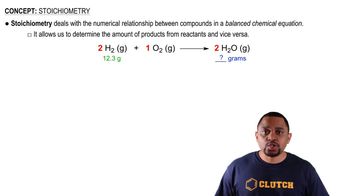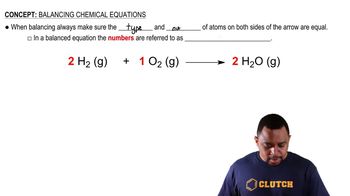Textbook Question
Identify the elements that have molecules as their basic units. a. hydrogen b. iodine c. lead d. oxygen
903
views
 Verified step by step guidance
Verified step by step guidance



Identify the elements that have molecules as their basic units. a. hydrogen b. iodine c. lead d. oxygen
An automobile gasoline tank holds 21 kg of gasoline. When the gasoline burns, 84 kg of oxygen is consumed, and carbon dioxide and water are produced. What is the total combined mass of carbon dioxide and water that is produced?
Two samples of carbon tetrachloride are decomposed into their constituent elements. One sample produces 38.9 g of carbon and 448 g of chlorine, and the other sample produces 14.8 g of carbon and 134 g of chlorine. Are these results consistent with the law of definite proportions? Explain your answer.